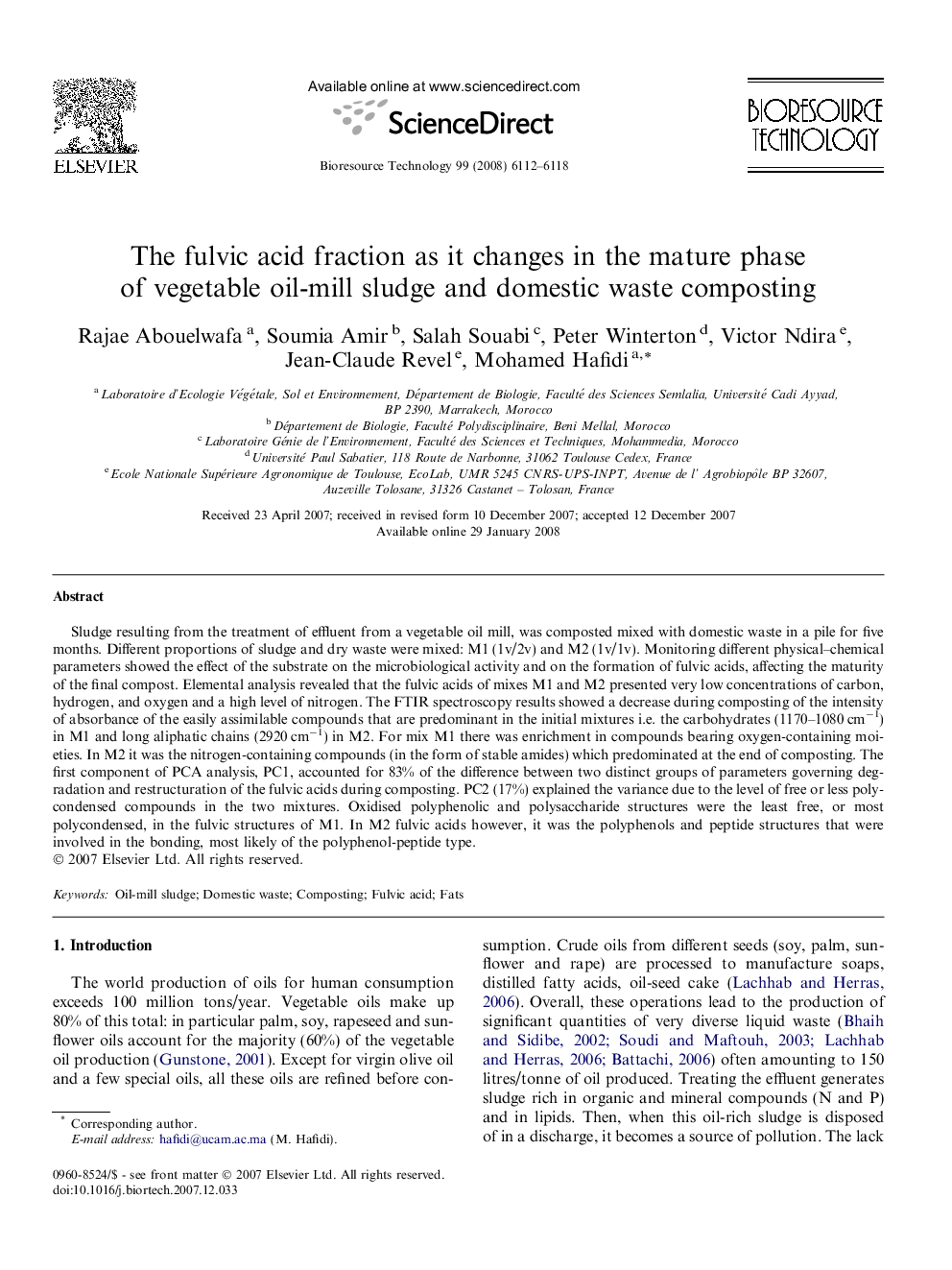| کد مقاله | کد نشریه | سال انتشار | مقاله انگلیسی | نسخه تمام متن |
|---|---|---|---|---|
| 684850 | 889029 | 2008 | 7 صفحه PDF | دانلود رایگان |

Sludge resulting from the treatment of effluent from a vegetable oil mill, was composted mixed with domestic waste in a pile for five months. Different proportions of sludge and dry waste were mixed: M1 (1v/2v) and M2 (1v/1v). Monitoring different physical–chemical parameters showed the effect of the substrate on the microbiological activity and on the formation of fulvic acids, affecting the maturity of the final compost. Elemental analysis revealed that the fulvic acids of mixes M1 and M2 presented very low concentrations of carbon, hydrogen, and oxygen and a high level of nitrogen. The FTIR spectroscopy results showed a decrease during composting of the intensity of absorbance of the easily assimilable compounds that are predominant in the initial mixtures i.e. the carbohydrates (1170–1080 cm−1) in M1 and long aliphatic chains (2920 cm−1) in M2. For mix M1 there was enrichment in compounds bearing oxygen-containing moieties. In M2 it was the nitrogen-containing compounds (in the form of stable amides) which predominated at the end of composting. The first component of PCA analysis, PC1, accounted for 83% of the difference between two distinct groups of parameters governing degradation and restructuration of the fulvic acids during composting. PC2 (17%) explained the variance due to the level of free or less polycondensed compounds in the two mixtures. Oxidised polyphenolic and polysaccharide structures were the least free, or most polycondensed, in the fulvic structures of M1. In M2 fulvic acids however, it was the polyphenols and peptide structures that were involved in the bonding, most likely of the polyphenol-peptide type.
Journal: Bioresource Technology - Volume 99, Issue 14, September 2008, Pages 6112–6118